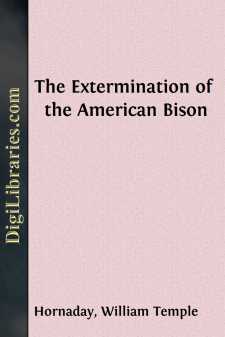Categories
- Antiques & Collectibles 13
- Architecture 36
- Art 48
- Bibles 22
- Biography & Autobiography 813
- Body, Mind & Spirit 142
- Business & Economics 28
- Children's Books 15
- Children's Fiction 12
- Computers 4
- Cooking 94
- Crafts & Hobbies 4
- Drama 346
- Education 46
- Family & Relationships 57
- Fiction 11828
- Games 19
- Gardening 17
- Health & Fitness 34
- History 1377
- House & Home 1
- Humor 147
- Juvenile Fiction 1873
- Juvenile Nonfiction 202
- Language Arts & Disciplines 88
- Law 16
- Literary Collections 686
- Literary Criticism 179
- Mathematics 13
- Medical 41
- Music 40
- Nature 179
- Non-Classifiable 1768
- Performing Arts 7
- Periodicals 1453
- Philosophy 64
- Photography 2
- Poetry 896
- Political Science 203
- Psychology 42
- Reference 154
- Religion 513
- Science 126
- Self-Help 84
- Social Science 81
- Sports & Recreation 34
- Study Aids 3
- Technology & Engineering 59
- Transportation 23
- Travel 463
- True Crime 29
Our Vanishing Wild Life Its Extermination and Preservation
Categories:
Description:
Excerpt
CHAPTER ITHE FORMER ABUNDANCE OF WILD LIFE"By my labors my vineyard flourished. But Ahab came. Alas! for Naboth."
In order that the American people may correctly understand and judge the question of the extinction or preservation of our wild life, it is necessary to recall the near past. It is not necessary, however, to go far into the details of history; for a few quick glances at a few high points will be quite sufficient for the purpose in view.
Any man who reads the books which best tell the story of the development of the American colonies of 1712 into the American nation of 1912, and takes due note of the wild-life features of the tale, will say without hesitation that when the American people received this land from the bountiful hand of Nature, it was endowed with a magnificent and all-pervading supply of valuable wild creatures. The pioneers and the early settlers were too busy even to take due note of that fact, or to comment upon it, save in very fragmentary ways.
Nevertheless, the wild-life abundance of early American days survived down to so late a period that it touched the lives of millions of people now living. Any man 55 years of age who when a boy had a taste for "hunting,"—for at that time there were no "sportsmen" in America,—will remember the flocks and herds of wild creatures that he saw and which made upon his mind many indelible impressions.
"Abundance" is the word with which to describe the original animal life that stocked our country, and all North America, only a short half-century ago. Throughout every state, on every shore-line, in all the millions of fresh water lakes, ponds and rivers, on every mountain range, in every forest, and even on every desert, the wild flocks and herds held sway. It was impossible to go beyond the settled haunts of civilized man and escape them.
It was a full century after the complete settlement of New England and the Virginia colonies that the wonderful big-game fauna of the great plains and Rocky Mountains was really discovered; but the bison millions, the antelope millions, the mule deer, the mountain sheep and mountain goat were there, all the time. In the early days, the millions of pinnated grouse and quail of the central states attracted no serious attention from the American people-at-large; but they lived and flourished just the same, far down in the seventies, when the greedy market gunners systematically slaughtered them, and barreled them up for "the market," while the foolish farmers calmly permitted them to do it.
We obtain the best of our history of the former abundance of North American wild life first from the pages of Audubon and Wilson; next, from the records left by such pioneers as Lewis and Clark, and last from the testimony of living men. To all this we can, many of us, add observations of our own.
To me the most striking fact that stands forth in the story of American wild life one hundred years ago is the wide extent and thoroughness of its distribution. Wide as our country is, and marvelous as it is in the diversity of its climates, its soils, its topography, its flora, its riches and its poverty, Nature gave to each square mile and to each acre a generous quota of wild creatures, according to its ability to maintain living things....




